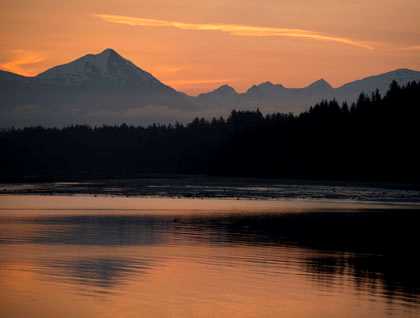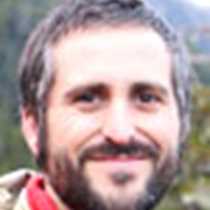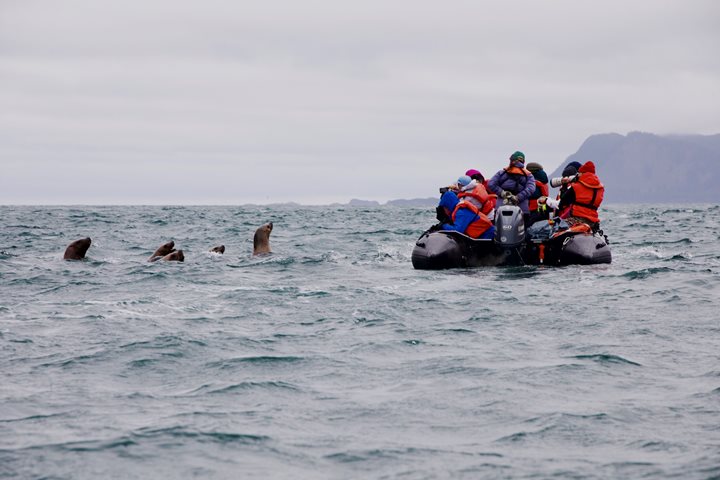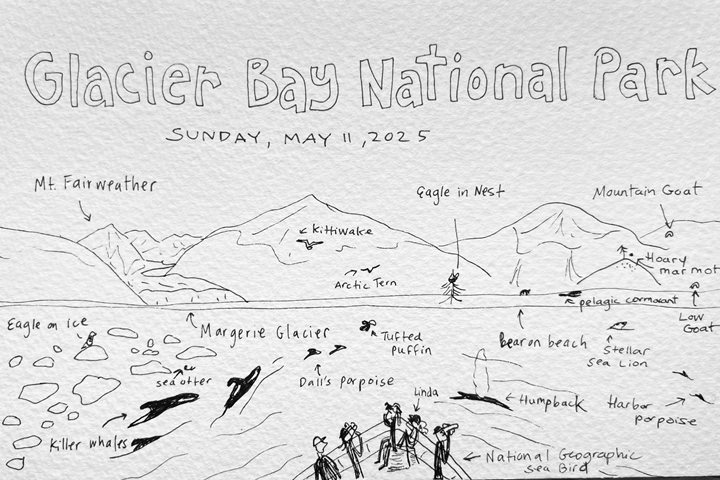As the sun rose above the mountains, several of us headed off National Geographic Sea Lion and onto the dock at Bartlett Cove just inside Glacier Bay. It was a beautiful morning and the photographers among us were up to take advantage of the morning’s golden light. The rest were there to enjoy the dawn chorus of song birds. Ruby-crowned kinglets and Pacific wrens led the chorus, while camera shutters clicked and buzzed like electric birds singing to the unfolding fiddleheads before them.
After breakfast, our ship cruised slowly past South Marble Island, which afforded us great views of tufted puffins, black-legged kittiwakes, and pigeon guillemots nesting on the island’s cliffs. At the island’s shore, Steller’s sea lions growled and groaned as their flippered compatriots splashed about in the waves. Cruising deeper into Glacier Bay, we passed Gloomy Knob where several goats grazed precariously over the steep cliffs that hung above the silt-green waters. Deeper still, we found a lone brown bear—among the largest of terrestrial carnivores (though some would have us believe their fearsome canines are seldom used, instead taking second stage to their less-fierce grass-grinding molars)—strolling on a pleasant beach backed by granite mountains. Our excitement rose further as we spotted a lone wolf, black as night (as is common among the wolf packs of Glacier Bay) with a muzzle grizzled by time, and then another, not far behind. Such a rare encounter was a delight for even the rangers that joined us for our journey into the park.
Soon we reached the end of the bay where the park’s icy architects, the Marjorie and Grand Pacific glaciers, halted our progress. It was their Pleistocene march and subsequent retreat that created the deep fjords through which we travelled, and they did not miss an opportunity to remind us of their power by casting giant icebergs adrift into the seas that lapped at their feet.
For the rest of the afternoon and early evening we cruised past drifting icebergs and diving murrelets as we made our way back towards Bartlett Cove. Once there, we were met by Gustavus’ own acclaimed writer, Kim Heacox. A rousing raconteur, Kim delighted us with sing-song stories sung over melodies strummed on his guitar. But it was our own naturalist, Emily, who captivated us most as she coaxed soft, yet sweeping solos and barbed reels from her fiddle. As the music drifted across the room, we too drifted off with fond memories of the day that was ending and renewed excitement for the one to come.









